4 Types of Hazardous Waste (Characteristics + Categories)
There are four types of hazardous waste to consider in the manufacturing and chemical industries.
These types are further subdivided into seven more specific categories that outline the definitions and qualities that make a waste hazardous.
Several federal organizations oversee hazardous waste regulation. States often have specific directions on how to dispose of waste without contaminating the local environment.
What Is Hazardous Waste? Our Hazardous Waste Meaning
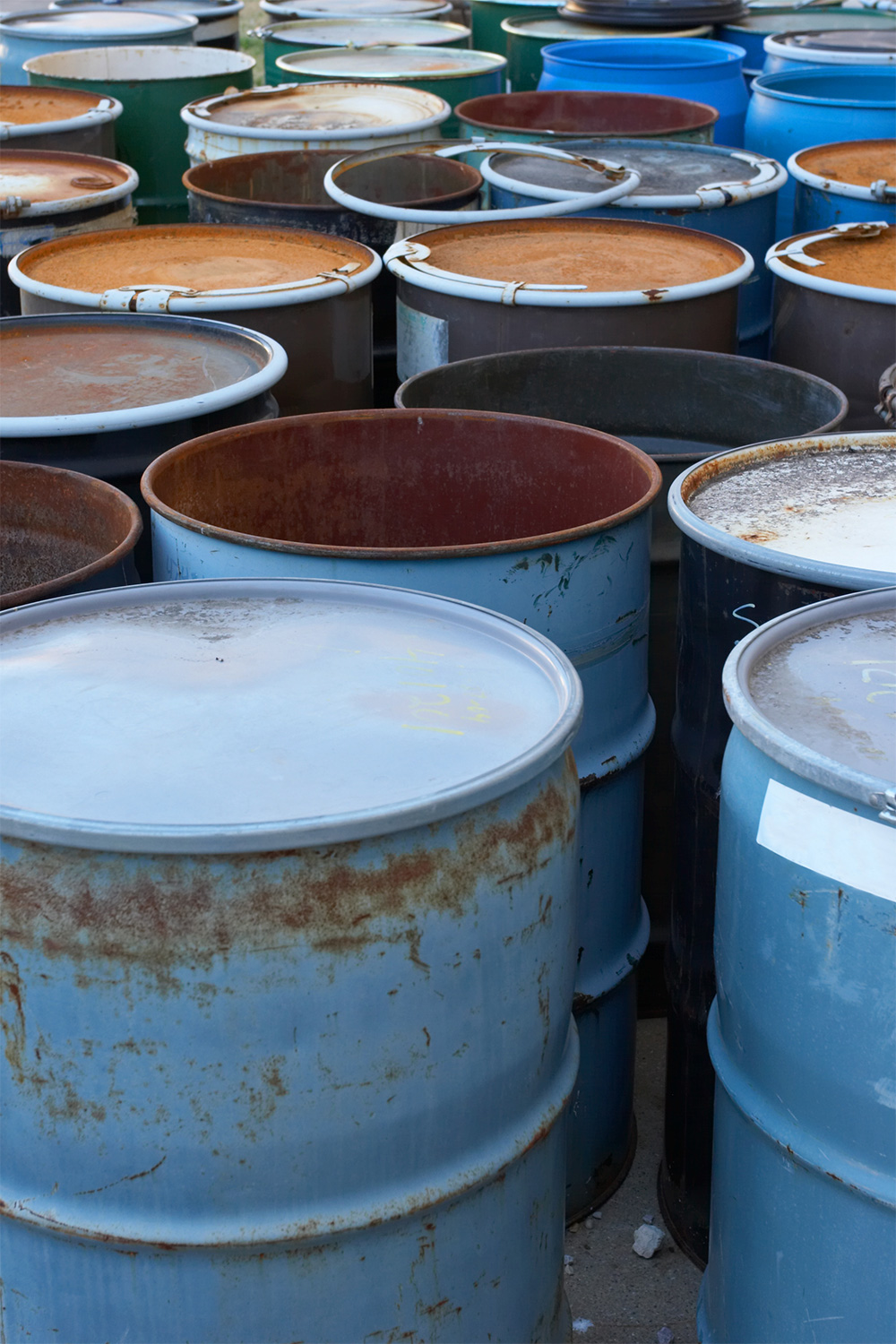
If you’ve ever wondered what is considered hazardous waste, you’re not alone. It is generally a broadly used term.
Hazardous waste is anything with properties that make it harmful to humans and the environment. Manufacturing processes can create hazardous waste, but batteries are also a type, so the definition covers a broad range.
The United States Environmental Protection Agency (EPA) created definitions and regulations for substances that could qualify as hazardous. It developed a program to ensure industries properly dispose of hazardous waste so it won’t harm the environment. There are solid waste management regulations in place, including managing the disposal facilities.
What Makes Something Hazardous?
The EPA determines that hazardous waste must be a solid, and then must meet further requirements in terms of health regulations. OSHA and the DOT also publish hazardous waste lists. The consensus is that most hazardous waste has at least one characteristic of ignitability, corrosivity, reactivity, or toxicity.
The Occupational Safety and Health Administration (OSHA) has another definition for hazardous waste: any chemical which causes physical or health hazards. This seems like a broader definition, but it allows the manufacturer to define it as such, which could be a conflict of interest.
Regardless of which definition you follow, you have to look closer at the waste before disposing of it. You need to consider the specific characteristics of the waste to ensure it fits into one of the 4 types of hazardous waste.
The 4 Types of Hazardous Waste
There are 4 types of hazardous waste, most commonly produced during manufacturing processes. The types include:
- Listed wastes
- Characteristic wastes
- Mixed radiological wastes
- Mixed hazardous wastes
Within these four broad classifications are several subdivisions. Many types of waste that fall into these seven categories require disposal in UN FIBC bulk bags, so read on to ensure you know what types of waste you’re handling.
What Are the 7 Categories of Hazardous Waste?
The four types of hazardous waste give you a general idea of the definitions. The hazardous waste categories below give you more information about the specific chemicals and their defining qualities.
The 7 categories of hazardous waste are:
- F list and K list
- P list and U list
- Ignitability
- Corrosivity
- Reactivity
- Toxicity
- Mixed wastes
Listed Wastes
One broad type of hazardous waste category is listed waste.
Listed wastes refer to wastes that are specifically listed on either the F, K, P, or U lists. The Code of Federal Regulations determines these classifications.
F List
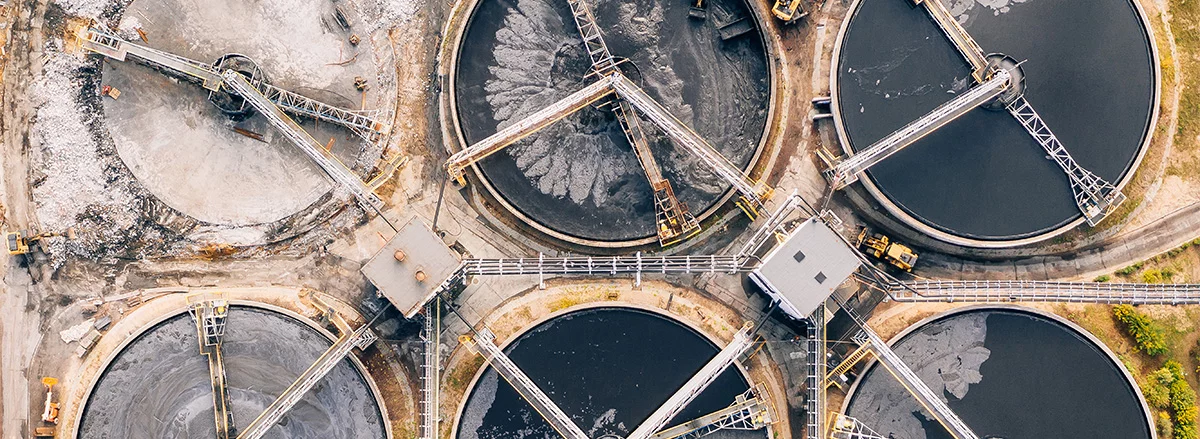
The F list is a classification of hazardous waste that includes waste from manufacturing processes. Because they can come from many different industries, they’re classified by the process that creates them.
It’s too challenging to sort them into industry-specific categories, so the classification takes place after they’re manufactured.
The list includes:
- Dioxin-bearing wastes
- Spent solvent wastes
- Multisource leachate
- Petroleum refinery wastewater treatment sludges
- Wood-preserving wastes
- Electroplating and metal finishing wastes
- Chlorinated aliphatic hydrocarbons
K List
As with waste on the F list, wastes on the K list come from manufacturing and industrial processes. But these wastes are more specific so it’s possible to trace them to the manufacturer and classify them accordingly.
The items on the list include wastewater and by-products from these processes.
Therefore, the K list hazardous waste classification divides waste according to the industry that creates it. They’re commonly related to pesticide or chemical production.
The list has 13 source-specific categories:
- Organic chemicals manufacturing
- Primary aluminum production
- Secondary lead processing
- Iron and steel production
- Pesticides manufacturing
- Processing coal (known as coking)
- Ink formulation
- Petroleum refining
- Wood preservation
- Inorganic pigment manufacturing
- Inorganic chemicals manufacturing
- Veterinary pharmaceuticals manufacturing
- Explosives manufacturing
P and U Lists
Waste on the P and U lists include unused portions of commercial-grade chemicals. When used properly, these chemicals might not cause harm. But when they sit unused, they need careful disposal to prevent contamination.
There are three main criteria waste must meet to qualify for this classification
The chemical in the waste:
- Is unused.
- Is a commercial chemical product.
- Contains a chemical from the P or U list.
P list waste is highly toxic, but most of the items on the list are very unusual so you’re unlikely to encounter them. Many pesticides that are now out of production were once classified as P-list waste.
U list waste is less toxic. If people or manufacturers can use the product, it’s not hazardous waste at all. These chemicals include pesticides and pharmaceuticals. It’s fine to use them properly, but if any unused portions remain, they need to dispose of them carefully to prevent harm to the environment.
The EPA keeps a list of these chemicals so you can double-check what counts as a chemical on the P list and what qualifies as a chemical on the U list.
Characteristics of Hazardous Waste
A characteristic waste contains a property that makes the waste hazardous and ensures it needs regulation for the threat.

The EPA determined four characteristics of hazardous waste:
- Ignitability
- Corrosivity
- Reactivity
- Toxicity
The EPA also uses these characteristics to further identify wastes from the F list and K list. The codes for this are:
- Ignitable waste ( I )
- Corrosive waste ( C )
- Reactive waste ( R )
- Toxic waste (T)
- Toxicity characteristic waste (E)
- Acute hazardous waste (H)
Ignitable Waste
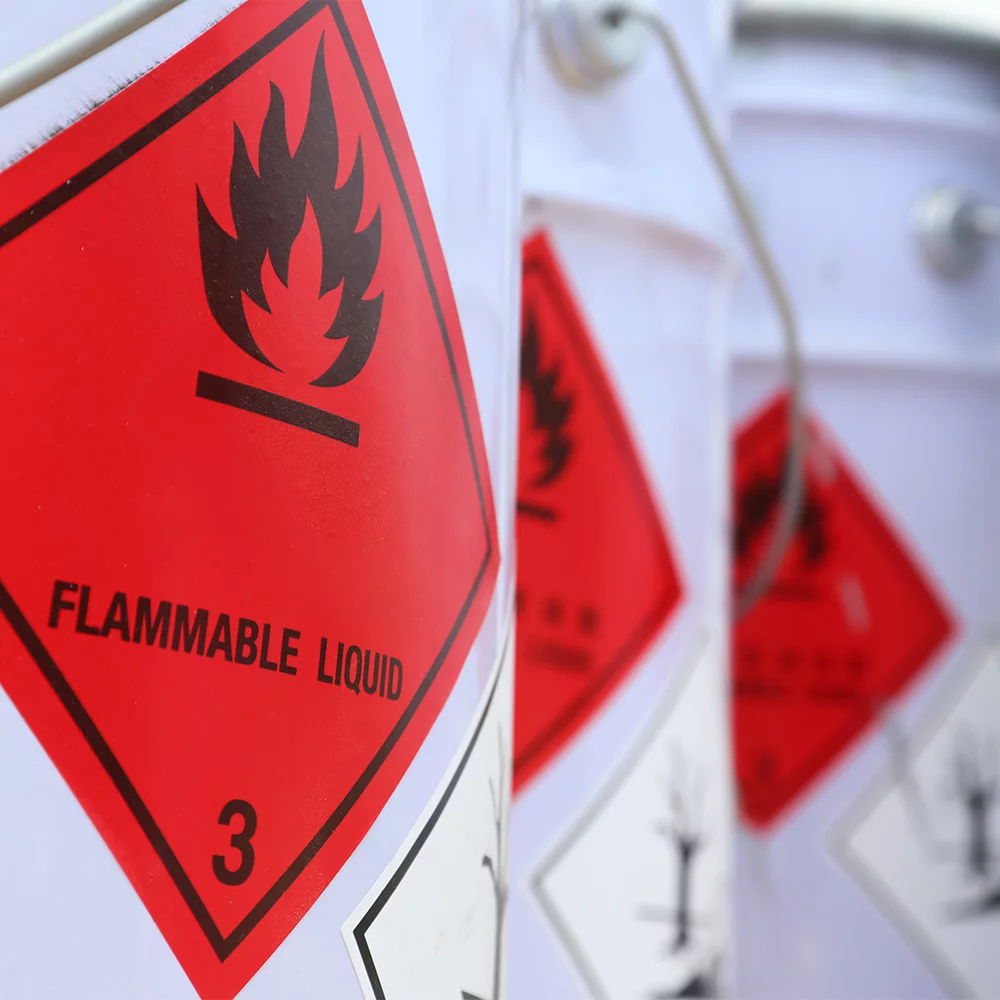
Ignitable waste is waste that can cause a fire in certain situations. It includes liquids that have flashpoints below 140℉ (60℃) because they can ignite in most conditions, making them a severe hazard.
Some waste has a flashpoint that puts it at risk of combusting when it meets air, so proper disposal is crucial. Compressed gasses and oxidizers rank highly for ignitability.
The EPA tests waste by using tests like the Ignitability of Solids, the Setaflash Closed-Cup Method for Determining Ignitability, and the Pensky-Martens Closed-Cup Method for Determining Ignitability. They compiled the results into a document outlining the Hazardous Waste Characteristic of Ignitability.
Corrosive Waste
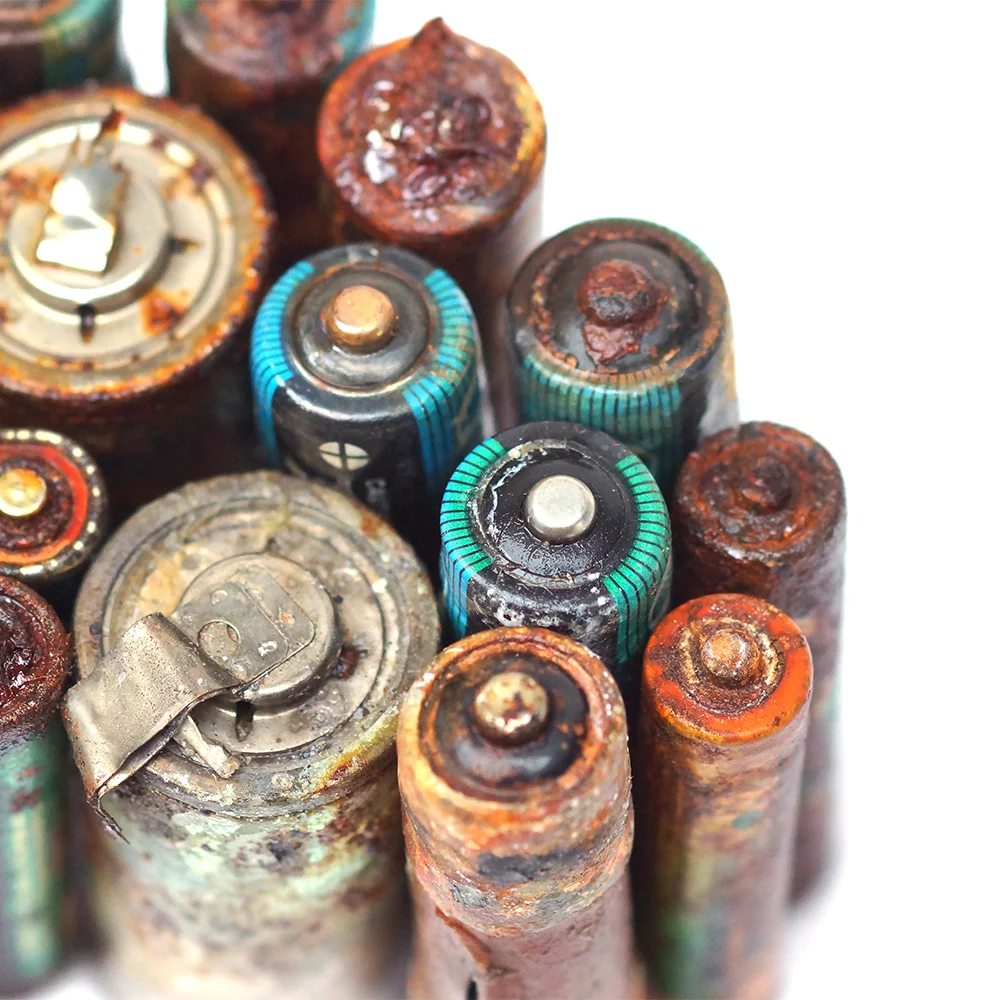
Corrosivity refers to waste that’s capable of eroding, corroding, or eating away at other substances and surfaces.
This type of waste is either very acidic or very basic and can erode plastic or metal barrels that would otherwise work for disposal.
Corrosive waste includes liquids with a pH of 2 or less, a pH of 12.5 or greater, or the ability to corrode steel.
Reactive Waste
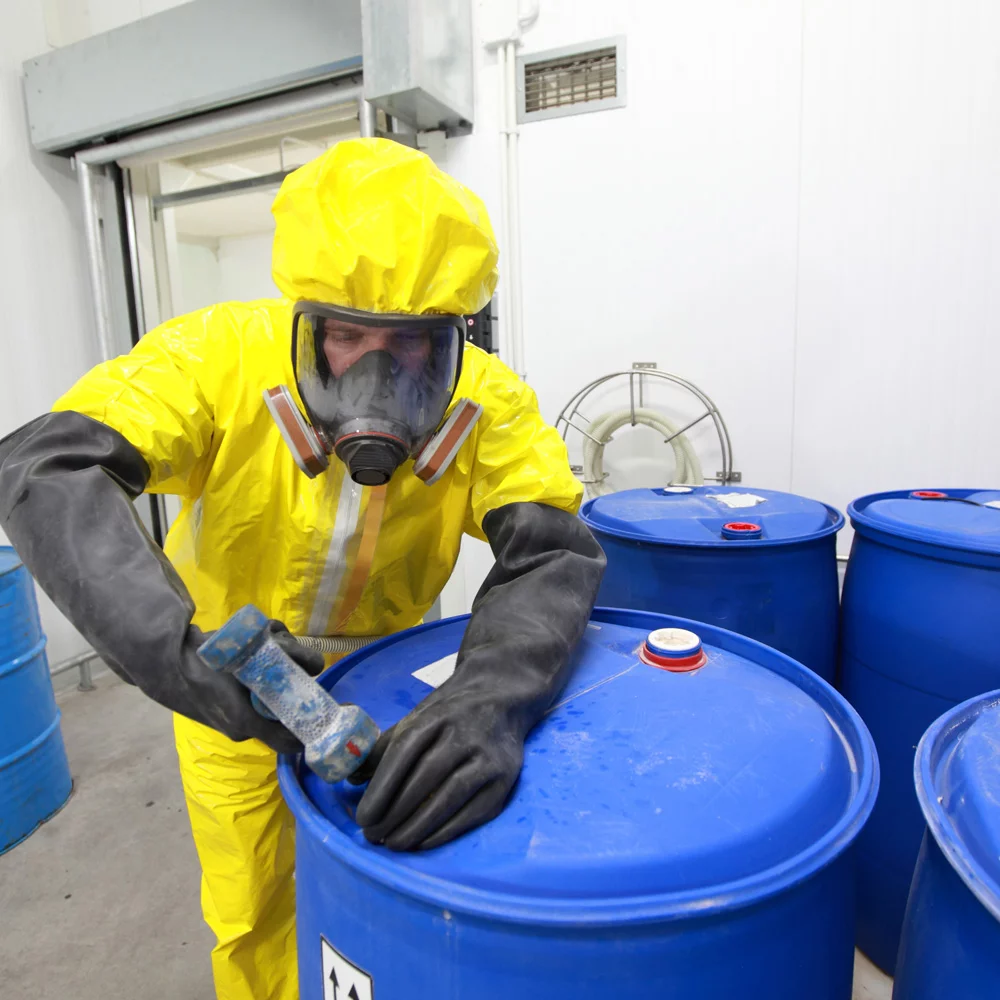
Reactive waste can act unstable even in normal conditions, making it hazardous to handle and dispose of.
It could react with water or give off toxic gasses, and some reactive waste can explode with disposal or when it encounters heat. This type of waste is very volatile so disposal needs to happen carefully to prevent accidents.
The EPA doesn’t test for reactivity but does have a document outlining the characteristic. This information can help you understand how to handle reactive waste when you’re disposing of it.
Toxic Waste
Toxic waste is harmful when it’s ingested or absorbed and can pollute groundwater. The Toxicity Characteristic Leaching Procedure tests waste to see how harmful it is to the environment.
Mixed Radiological and Hazardous Waste
Waste in this category is both hazardous and radioactive. Because mixed radiological and hazardous waste falls under two different federal statutes, two separate entities have regulations for disposal. They are the Resource Conservation and Recovery Act (RCRA) and the Atomic Energy Act (AEA).
Hazardous Waste Examples
For those wondering how to dispose of hazardous waste, knowing examples of hazardous waste can help.
You can always check the EPA for hazardous materials examples if you’re unsure, but these lists will give you an idea of what to look for.
Ignitable Waste Examples
Ignitable waste examples include:
- Solvent-based paint waste
- Used paint booth exhaust filters
- Waste kerosene or gasoline
- Petroleum parts washer solvents
Corrosive Waste Examples
Corrosive waste examples include:
- Lead-acid batteries
- Acid or alkaline cleaning solutions
- Caustic hot tank waste
- Rust removers
Reactive Hazardous Waste Examples
Reactive hazardous waste examples are:
- Pressurized aerosol cans
- Cyanide plating wastes
- Lithium-sulfur batteries
- Metallic sodium and potassium
- Waste concentrated bleaches
Toxic Waste Examples
Examples of toxic waste include:
- Batteries for electronics, cell phones, and computers
- Treated wood waste containing pentachlorophenol
- Painting waste that contains certain solvents
- Painting waste with toxic metal-based pigments
- Used oil filters with high levels of lead or benzene
What Does Hazardous Waste Look Like?
Most hazardous waste is solid, as defined by the EPA. But corrosive wastes can be liquid, so there’s no specific thing you can look for to define waste. It’s better to read the EPA’s definitions and regulations so you understand what is hazardous and how to handle it.
These federal guidelines are the foundation for proper disposal, but each state might have stricter laws in place. You should always check with your specific location before disposing of anything that might qualify as hazardous waste.
Key Takeaways
Learning the four types of hazardous waste, as well as the seven categories, will help you understand what chemicals are toxic to the environment.
When you know the key features of hazardous waste, you’re better equipped to properly dispose of them in a way that won’t hurt anyone. And don’t hesitate to contact us if you are in need of UN approved bulk bags to properly dispose of hazardous waste materials.







